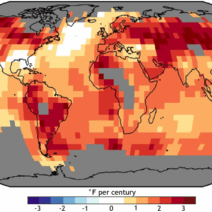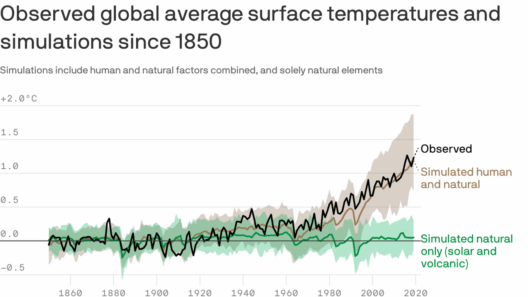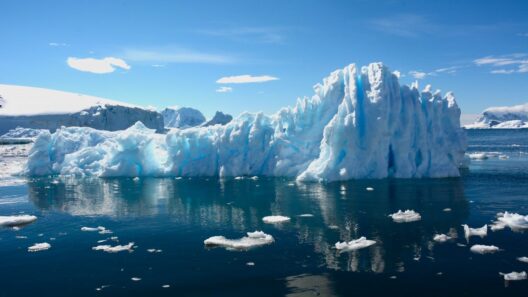Climate change has irrevocably altered the fabric of our natural world, most vividly illustrated in the erratic patterns of storm seasons. Rising waters and stronger winds are no longer anomalies confined to historic narratives; they have become emblematic of a new meteorological paradigm. Understanding the complexities behind this phenomenon involves delving into oceanic dynamics, atmospheric shifts, and the broader implications for both ecosystems and human populations.
Historically, storm seasons followed predictable cycles influenced by the earth’s tilt, solar radiation, and ocean temperatures. However, as global temperatures increase, these cycles are growing unpredictable. The warming of the planet leads to the thermal expansion of ocean waters and the melting of polar ice caps, contributing to elevated sea levels. As oceans absorb more heat, they also become more volatile. This volatility influences weather systems, generating storms that are not only more potent but also more frequent.
The relationship between temperature and wind patterns is pivotal. Warmer air can hold more moisture, leading to increased humidity levels that fuel storm development. Rapidly warming ocean surfaces create an environment ripe for the intensification of cyclones and hurricanes. As this process unfolds, storm systems can develop at an alarming rate, with meteorological conditions shifting unpredictably in response to an ever-changing climate. This unpredictability poses significant risks to various regions, particularly low-lying coastal areas and islands that are already battling rising tides.
Another crucial factor contributing to unpredictable storm seasons is the alteration of atmospheric circulation patterns, including the jet stream. As the Arctic warms, the jet stream becomes wavier and less stable. This instability can unleash erratic weather patterns, resulting in prolonged storm events or extreme weather phenomena at unusual times. Consequently, areas that historically experienced mild weather may find themselves grappling with unprecedented storms, as meteorologists are challenged to keep pace with these shifts.
Moreover, the phenomenon of atmospheric rivers, which transport vast amounts of moisture from tropical regions to the mid-latitudes, is becoming more commonplace. These intense corridors of water vapor can lead to extreme rainfall events and flooding. When atmospheric rivers converge with other weather systems, the results can be catastrophic. The interplay between these factors is intricate, exemplifying a cascade of effects set in motion by climate change.
Farther from shore, the ocean’s currents are equally impacted by rising temperatures. Changes in the thermohaline circulation, often referred to as the global conveyor belt, can disrupt weather patterns globally. This circulation is critical for regulating climate as it distributes heat across the planet. Diminishing salinity levels due to melting ice and increased freshwater from rivers can slow this circulation, leading to altered weather patterns and enhanced storm development. The interconnectedness of the ocean and atmosphere highlights a delicate balance, one that humanity is disrupting at an alarming rate.
One must also consider the socio-economic implications of these shifting storm patterns. Communities that are ill-prepared or lack the resources to cope with severe weather events often face devastating consequences. Displacement, economic loss, and strain on emergency services become inevitable in the wake of intensified storms. The unpredictability of storm seasons further complicates preparedness efforts, leaving vulnerable populations at increased risk. Urban infrastructure is also under siege, as city planners must grapple with evolving standards for resilience in the face of this new reality.
Additionally, the impact of climate change extends to the natural world. Ecosystems are struggling to adapt to the rapid changes in their environments. Frequent and intense storms can devastate habitats, disrupt migration patterns, and inhibit the reproductive cycles of various species. For instance, coral reefs, which serve as vital marine ecosystems, are particularly vulnerable to disturbance. Increased storm intensity can result in physical damage to reefs, while rising water temperatures lead to coral bleaching, threatening biodiversity and fishing communities that rely on these ecosystems.
The growing unpredictability of storms has also heightened public awareness and discourse around climate change. As severe weather events become more apparent, they catalyze discussions on environmental policy and sustainable practices. The phenomenon compels individuals and communities to re-evaluate their relationship with the environment and confront the urgency of action against climate change.
In conclusion, the transformation of storm seasons into unpredictable anomalies serves as a stark reminder of the broader narratives associated with climate change. Rising waters and stronger winds are not merely statistical observations; they embody the consequences of human actions reverberating through the natural world. As the lines between atmospheric and oceanic phenomena blur, the need for comprehensive understanding and proactive measures becomes apparent. The responsibility lies with both individuals and policymakers to mitigate these changes, ensuring a resilient future for generations yet to come. The environment deserves our stewardship, now more than ever, as we collectively grapple with the realities of a warming world.








